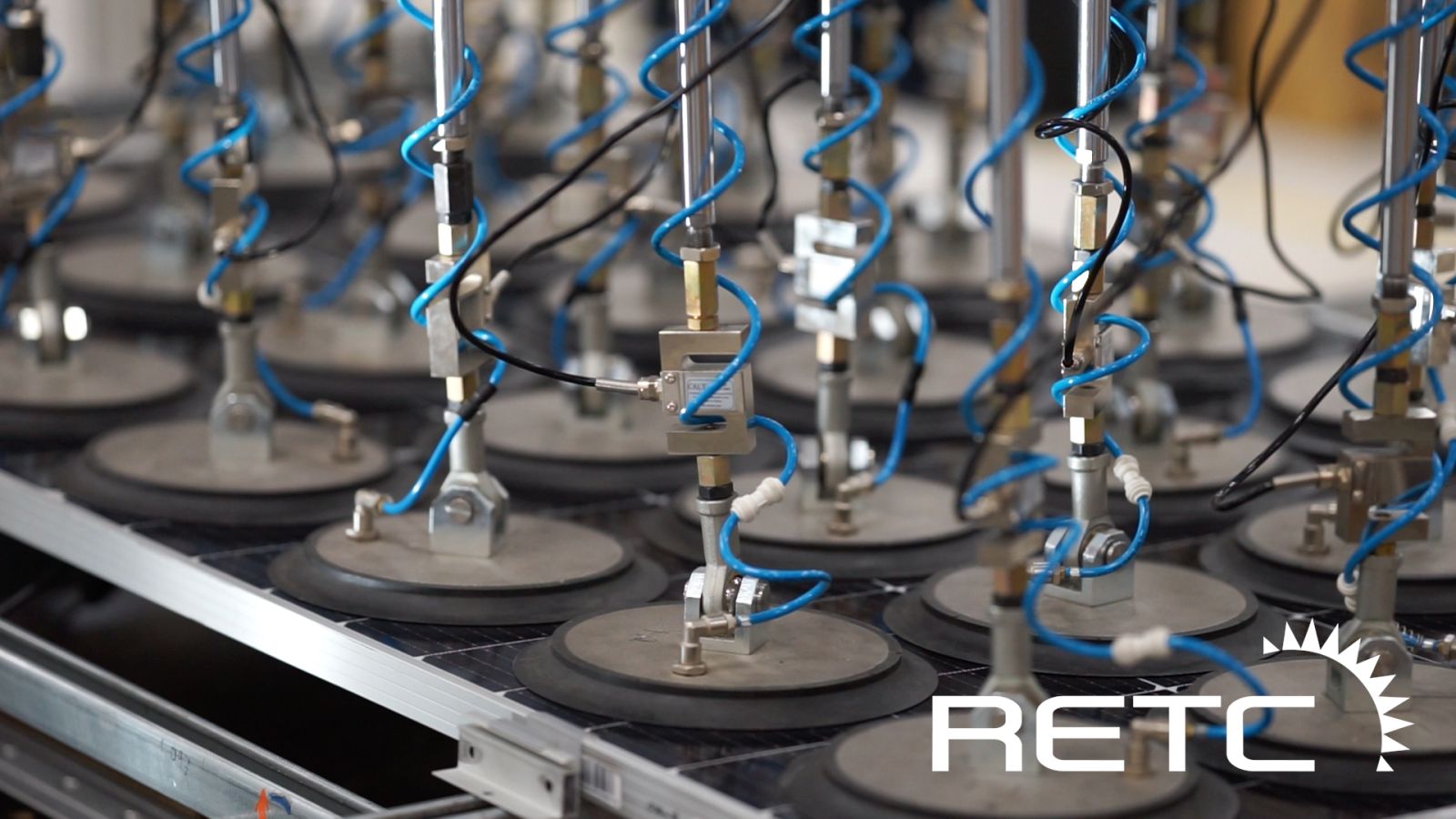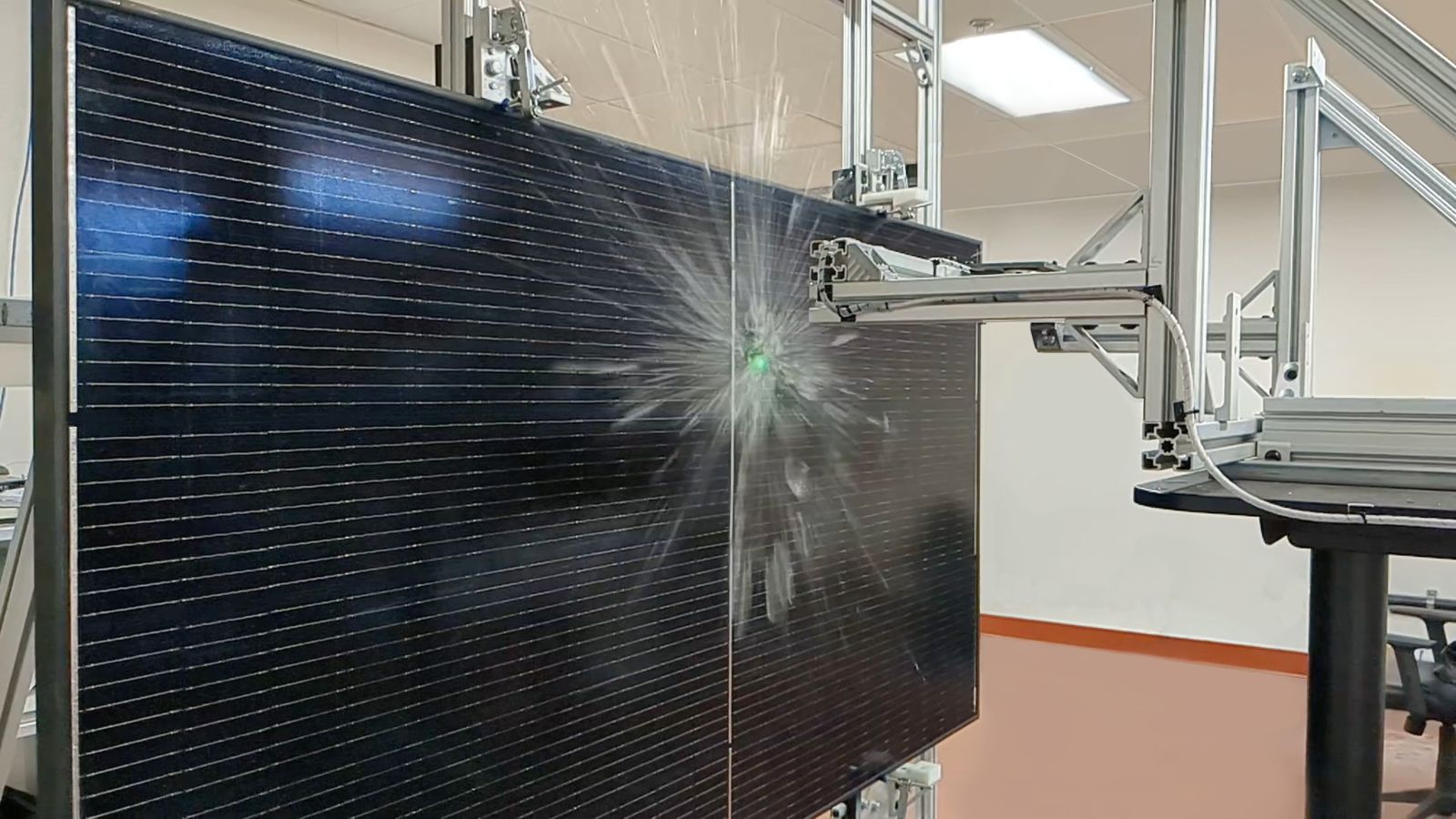Testing for Durability and Longevity
It is an exciting and transformative period for the U.S. solar energy industry, driven by the Inflation Reduction Act and various state and local incentives. These factors have spurred manufacturers to consider expanding their production capacity within the U.S., promising a host of new job opportunities, and bolstering supply chains across North America.
While this resurgence in domestic production marks the latest milestone in the solar energy sector, it is important to acknowledge that the global industry has experienced substantial growth and maturation over the past decade. As a result, we now have easy access to high-efficiency solar panels equipped with extended warranties of 25 years or more. Considering that we rarely expect any other electronic device installed on our roofs to function flawlessly for several decades, it raises the question: How can we be confident that solar panels will truly endure for such an extended lifespan.

By adhering to international standards and performing extended durability testing, installers and homeowners can feel confident that the panels they choose will last well beyond the warranty period — and provide the best levelized cost of energy possible.
International standards
There are several international standards that have been developed to ensure modules will perform safely and effectively. A few of the most commonly referenced standards have been developed by the International Electrotechnical Commission (IEC), which is a global organization that sets international standards for various electrical and electronic technologies. These include:
- IEC 61730 - focuses on the safety requirements for solar panels. It specifies the design qualifications, construction requirements, and testing procedures to ensure the safe operation of solar panels in various applications.
- IEC 61215 - specifies the requirements for design qualification of solar panels. It outlines the criteria that solar panels need to meet in order to be considered safe, reliable, and suitable for their intended use. It covers a range of tests and requirements related to mechanical strength, electrical performance, and environmental durability.
- IEC 61701 - focuses on the salt mist corrosion testing of solar panels. It provides a test method to evaluate the ability of solar panels to withstand exposure to a corrosive salt mist environment. The purpose of this testing is to assess the module's resistance to corrosion, which can occur in coastal or marine environments where saltwater exposure is prevalent.
These standards do a great job of ensuring commercially available solar panels meet a minimum threshold for safety, performance, and reliability. It is important to realize, however, that these standards are not designed to validate the performance over the full warranty period.
Extended Durability Testing
To provide confidence for long-term reliability and durability, solar panels undergo a series of rigorous environmental stress tests. These tests subject the panels to harsh environmental conditions intentionally designed to accelerate the chemical and physical mechanisms that can result in performance degradation. Since no single test can provide all the necessary information, a comprehensive suite of tests is required.

Over the years, considerable debate has taken place regarding the necessary exposure times, stress levels, and sequences required for these testing protocols. More recently, a growing consensus has emerged, leading to the establishment of a standard set of tests that serve as reliable indicators of long-term performance. These tests are typically consolidated within "Product Qualification Programs", and conducted by independent third-party testing laboratories. By undergoing these rigorous tests, solar panel manufacturers provide customers with the assurance of panel quality and reliability.
The environmental stress tests included in these Product Qualification Programs include the following:
Damp Heat: Solar panels are subjected 2000 hours at a temperature of 85 °C and a relative humidity of 85 percent. These high temperatures and humidity levels evaluate a panel’s resistance to moisture ingress, and ability to withstand deployment in hot and humid climates.
Thermal Cycling: For this test, solar panels are exposed to temperatures cycles between -40°C and +85°C. During the increasing side of the cycle, electrical current is passed through the module. This causes the actual panel temperature to exceed 100°C. Panels are exposed to 600 cycles under these conditions. This test is used to stress the electrical interconnects, and ensure the module can withstand thermal stress that might be experienced in a hot and dry climate like the U.S. southwest.
Mechanical Stress: To ensure panels will survive the mechanical loads experienced during their operational lifetime, a sequence of mechanical and thermal stresses is applied to the panel. It typically starts by mounting the module as it would be found in the field, while weight is applied until a static load of 2400 Pa is reached. This simulates typical snow load conditions. The weight is applied for one hour. The panel is then flipped, and the same load is applied to the rear side. This is repeated a total of three times. Following this static load, a dynamic load is applied in which the panel is cycled 1000 times through a series of downward and upward forces at a pressure of 1000 Pa. This cyclic loading would represent the forces exerted on a panel during a wind event. Finally, a series of thermal cycles is completed to ensure the mechanical loading did not have any impact on the electrical connections within the panel.
Backsheet Testing: The backsheet of the module is a critical component that protects the internal electrical circuits from the outdoor environment. To ensure this external layer will not degrade during normal operation, a series of stressors are applied to the backside of the module. This test sequence starts with the panel exposed to 1000 hours of Damp Heat conditions. The panel is then subjected to a series that starts with UV exposure on the rear side of the panel, followed by thermal cycling. This series is completed three times.
Hail Testing: Panels are subjected to the impact of simulated hailstones to check their durability against hail damage. The panels are struck with various sizes and speeds of hailstones to evaluate their ability to resist physical damage.
Potential-Induced Degradation (PID) Test: Panels are subjected to a high-voltage bias in a controlled damp heat environment to assess their resistance to PID. This test evaluates if the panels are susceptible to power loss caused by voltage potential between the cells and the frame.
.jpg) Following each of these testing sequences, panels are evaluated for performance and safety. Any signs of severe degradation indicate a potential flaw in the panel design, materials, or manufacturing process. While not yet mandatory, many solar panels on the market have successfully endured these harsh testing conditions, further bolstering consumer confidence in their quality and longevity.
Following each of these testing sequences, panels are evaluated for performance and safety. Any signs of severe degradation indicate a potential flaw in the panel design, materials, or manufacturing process. While not yet mandatory, many solar panels on the market have successfully endured these harsh testing conditions, further bolstering consumer confidence in their quality and longevity.
Through adherence to international standards and rigorous testing protocols, many tier 1 solar panel manufacturers strive to ensure their products surpass warranty expectations, and provide the best levelized cost of energy. These efforts not only promote the continued growth of the solar energy industry, but also empower North American consumers with reliable and durable solar panel options for a sustainable future.
Dr. Eric Schneller is Director of Product Development at Silfab Solar, which has more than 40 years of solar experience, and operates out of facilities in Bellingham and Burlington, Washington, and Toronto, Canada. All locations feature fully automated, ISO certified production lines, and utilize just-in-time manufacturing to deliver millions of North American-made solar panels designed specifically for the North American market.
Silfab Solar | silfabsolar.com
Author: Dr. Eric Schneller
Volume: 2023 July/August









.png?r=6529)

